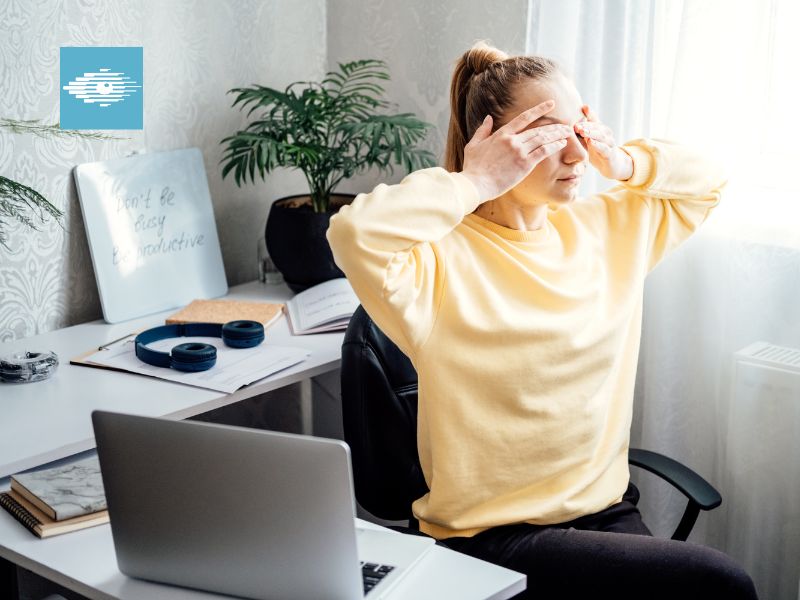Which Exercise Is Best for the Eyes?
Which Exercise Is Best for the Eyes? As our daily routines become more screen-centered, many of us start wondering: which exercise is best for the eyes? While there’s no single magic routine that cures all vision concerns, incorporating targeted eye exercises can support eye comfort, reduce strain, and promote healthier habits for the eyes. This post explores practical eye exercises, how they work, and how to include them in a balanced routine.
Introduction: The idea behind eye exercises
Eye exercises are activities designed to strengthen eye muscles, improve focus, and promote relaxation of the eye tissues. They are often recommended for people who spend long hours in front of screens, read small print, or experience eye fatigue. It’s important to note that eye exercises are not a substitute for professional eye care or glasses/contacts prescribed by an optometrist or ophthalmologist. However, when used as part of a broader eye-health plan, they can contribute to better comfort and performance.
How do eye exercises work?
Eye muscles control both convergence (the ability to turn the eyes inward to focus on near objects) and accommodation (the change in lens shape to focus at different distances). Prolonged near work can lead to fatigue, blurred vision, headaches, and reduced focusing speed. Eye exercises aim to:
- Improve ocular motor control and coordination
- Enhance focusing flexibility
- Promote relaxation and reduce strain
- Encourage regular breaks and mindful visual habits
While research on specific prescriptions for everyone is limited, many people report subjective relief when integrating simple routines into daily life.
The most common eye exercises to try
Here are practical exercises that are easy to incorporate into a busy day. If you have any eye disease or symptoms such as sudden vision loss, double vision, or persistent pain, consult an eye care professional before starting any exercise routine.
- 20-20-20 Rule: Every 20 minutes, look at something 20 feet away for at least 20 seconds. This helps reset focus and reduce digital eye strain.
- Figure 8 (Algor Graph) Trace: Imagine a giant sideways figure eight and slowly trace it with your eyes for 1–2 minutes in each direction. This can improve smooth pursuit and eye coordination.
- Near-Far Focus Shifts: Hold a small object about 10 inches away, then shift focus to something 10–15 feet away. Alternate several times to train accommodation.
- Pencil/Target Push: Hold a pencil tip at arm’s length and slowly bring it toward you while keeping focus. Stop when you’re about to see double, then backtrack. This exercise practices convergence and focal control.
- Palming: Rub hands together to warm them, cup your palms over closed eyes without applying pressure, and breathe deeply for 1–2 minutes. This promotes relaxation and reduces strain.
- Saccade Drills: Quickly shift gaze between two distant points on the wall, back and forth, in sets of 10–20 repetitions. This trains rapid eye movements and tracking.
Ergonomics and lifestyle tips to support eye health
Exercises are most effective when paired with good visual hygiene and healthy habits:
- Proper lighting: Use diffused, glare-free lighting to reduce strain.
- Screen positioning: The top of the screen should be at or slightly below eye level, and the screen distance should be about arm’s length.
- Blink regularly: Conscious blinking helps refresh the tear film and prevent dryness.
- Hydration and nutrition: A balanced diet with nutrients like omega-3 fatty acids, lutein, and zeaxanthin supports eye health.
- Regular eye exams: Routine check-ups catch issues early and keep your prescriptions up to date.
Debunking myths about eye exercises
There are many myths surrounding eye exercises, such as the idea that they can correct refractive errors like myopia or hyperopia or replace glasses. The truth is:
- Eye exercises can improve comfort and performance but typically do not change the underlying refractive error.
- They’re most beneficial for reducing fatigue and improving visual skills during near work.
- They should complement, not replace, professional eye care and vision correction when needed.
If you have been told you need specific treatment for conditions like amblyopia (lazy eye) or strabismus, those conditions require professional medical management and should be addressed by an eye specialist.
Personalizing your routine: finding what works for you
Not all eye exercises suit everyone. Start with a simple routine a few minutes daily and observe how your eyes feel. If you notice discomfort, headaches, or vision changes, pause and consult an eye care professional. Consistency matters more than intensity.
- Start small: 5–7 minutes per day, gradually increasing as comfortable.
- Keep a log: Track which exercises help and when you perform them.
- Integrate with breaks: Pair eye exercises with work breaks to create a sustainable habit.
Which Exercise Is Best for the Eyes? – Final thoughts
Eye health is a cornerstone of overall comfort and productivity in a screen-heavy world. While there isn’t a single “best” exercise for every person, the most effective approach combines simple eye exercises with good visual hygiene, regular breaks, and professional eye care. By adopting the 20-20-20 rule, practicing convergence and focusing drills, and maintaining healthy habits, you can support comfortable vision today and in the years ahead. If you experience persistent visual symptoms, seek evaluation from an eye care professional to tailor a plan that fits your needs. Remember, consistency and safety come first when it comes to eye exercises.
Visit our website to learn more about our Doctors and our office!

